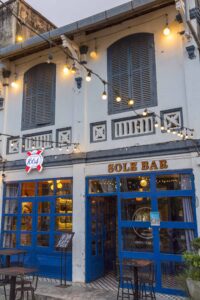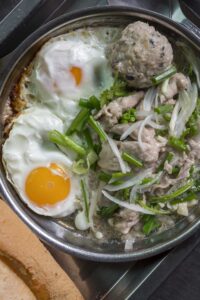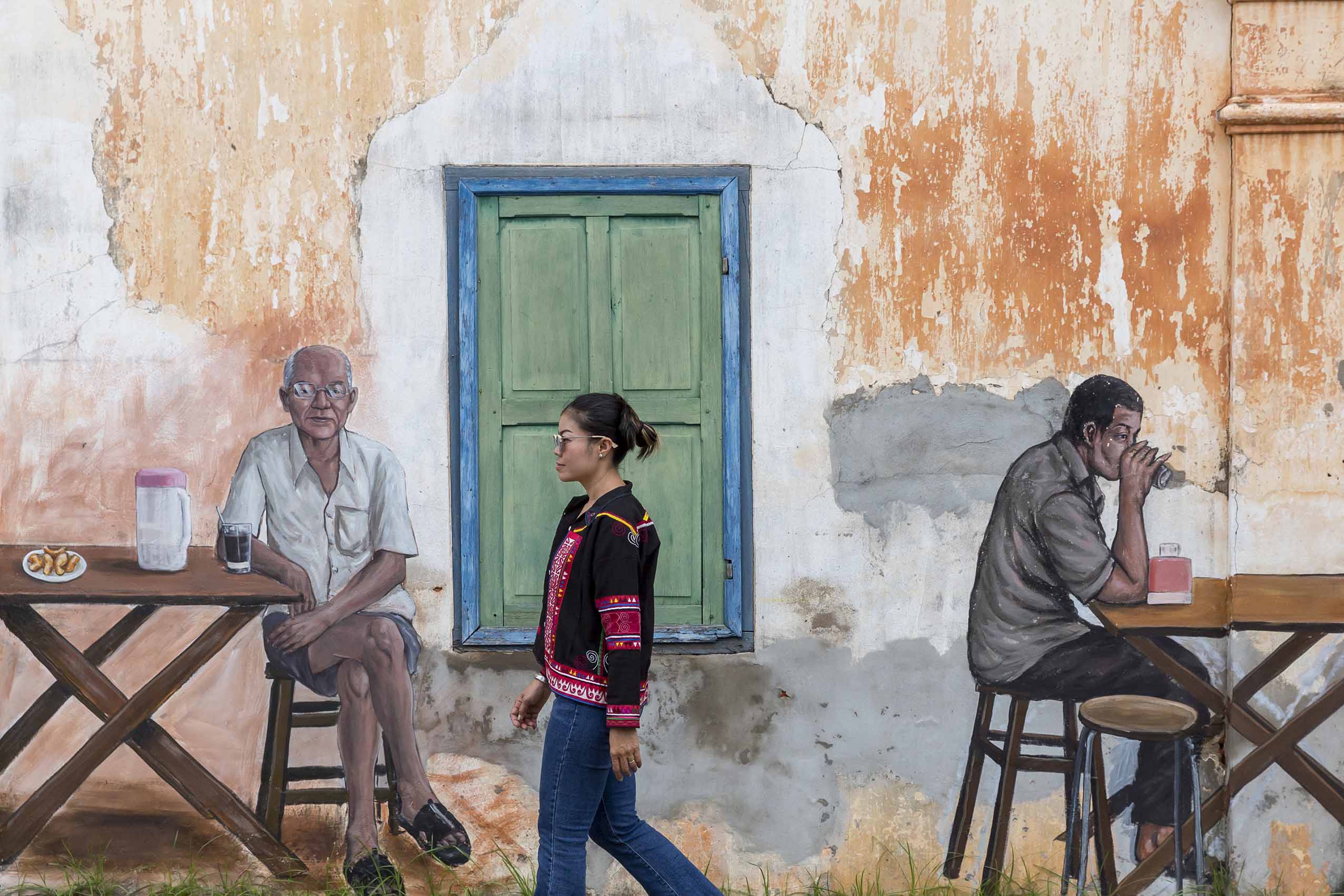Savannakhet is much more than a pit stop
Not so long ago, Savannakhet was seen as little more than a town to pass through, or at most a necessary one-night rest stop to help break the monotony of the long straight road that runs from Vientiane to Pakse. Trying to get people to linger longer has always been a hard sell. A few kilometers north of the town, the 1.6-kilometer Friendship Bridge spans the Mekong to Mukdahan in Thailand. It opened in 2006, and although it’s an important trade route between Laos and its neighbor, the much-anticipated boom for Savannakhet failed to fully materialize. But in many ways, this has been of benefit to visitors who can still enjoy the town’s ramshackle charms and quiet streets.
The draw for many is the old quarter, a compact area that has almost as many French colonial era (1893-1953) buildings as Luang Prabang. Unlike the over-manicured UNESCO World Heritage town in the north, Savannakhet has been left to age gracefully. There are numerous terraced shophouses that flank a one-time market square called Talat Yen, offices, public buildings, and St. Theresa’s Catholic Church, all of which bear the trademark French architectural style and motifs. Without any UNESCO funding, not only has there been no restoration, there’s also thankfully been no construction of faux buildings on vacant land as there has been in Luang Prabang. In Savannakhet, what you see is what you get and it’s all the more real for it.

Coffee Culture
Of course, there’s a fine line between the attractive patina imbued by time and the unstoppable slide toward decrepitude. One can but hope for a series of controlled and sympathetic restorations, rather than the architectural equivalent of full cosmetic surgery and Botox. Yet though the appeal and potential of the crumbling old buildings has clearly been lost on the older generation, it’s not so with young local entrepreneurs. For a glimpse of what is possible, head to Le Corbeau, a characterful café and cocktail bar (and the nearest thing to a hipster joint you’ll find in Savannakhet, but don’t let that put you off!) run by Khounepaserth ‘Bie’ Siaksone, a key figure on the Lao artisan coffee scene. Housed in one of the town’s grandest century-old buildings, the fabulous interior is one that could have only been created by the steady passage of time. Its lofty five-meter ceilings with lazily turning fans, shuttered windows, atmospheric lighting, and peeling paint add to the venue’s allure. It has been renovated just enough to make it functional and remains exquisite in all its faded glory. Here you can enjoy a selection of excellent coffees throughout the day and cocktails by night. There are also light bites and pizza available. Savannakhet’s youthful energy has also manifested itself through art that uses the old buildings as canvases. It’s fun to wander the streets and discover the many wall paintings that depict scenes of daily life as well as enormous psychedelic dinosaurs.

Breakfast of Champions
Diners in search of Lao food may find Savannakhet challenging. Hospitable to a fault, ‘Savannite’ restaurateurs mainly cater to their neighbors’ tastes who venture over the river on day trips, meaning it is easier to find Thai food than local dishes. The town’s considerable Vietnamese population dominates the daytime dining scene with a proliferation of pho shops. The ‘breakfast of champions’ is to be found at Nga’s Pepperlunch. Tucked away at the bottom of a narrow alley off Lasavongseuk Road, this unassuming eatery serves up sizzling hot plates of eggs, pork, and xin mai meatballs, accompanied by a crusty baguette and tea, to a steady stream of appreciative and loyal fans from 7 a.m. until they sell out (usually by midday). At night a huge floating restaurant on the riverfront serves standard Thai fare, while French cuisine can be found at Restaurant Chez Van Som. There are also several cafés, bars, and restaurants in and around the Talat Yen area. A popular night spot is the old 1960s Lao Chareun Rama cinema and its environs which house a handful of boutiques and coffee shops. There is also a night market here and the popular alfresco Bang Bar.
You can tap into more of the town’s history with a visit to the home of Kaysone Phomvihane (1920-1992), the first prime minister of Lao PDR, who was born in the province. Savannakhet also achieved fame when French geologist Josué Heilman Hoffet unearthed fossilized dinosaur bones in 1936 and in subsequent excavations during the ‘90s by a Lao-French team. A tiny two-room museum, complete with flashing multicolored lights, is overseen by the enthusiastic and extremely helpful Mr. Vath, who will allow you to handle fossils and fragments of meteorites, is a must for any itinerary.

Temple Time
Other cultural highlights within the town include Wat Xaiyaphoum, the largest and most colorful temple in Savannakhet, and at sunset, the enormous riverfront Naga that faces menacingly toward Thailand. Located 15 kilometers from town, the ancient That Ing Hang is worth the drive. The stately and beautifully carved stupa here was restored in the mid-16th century. It stands at the center of a large quadrangle, covered on three sides and lined with dozens of Buddha images. The site has been of great religious significance for 2,000 years and is known as a place where the Buddha rested and received alms. A festival of worship is held here every December. After visiting the stupa, if you are of the mind to push on another 15 kilometers, you can enjoy lunch at Xeno which is famous for grilled chicken. More than 60 vendors will be vying for your business here.
Today, Savannakhet is so much more than a stopover en route to Vientiane or Pakse. Take time to discover the unique character of ‘The Town that Time Forgot’. You’ll be glad you did.

GETTING THERE
Lao Airlines has daily flights from Vientiane to Savannakhet
Text & PHOTOGRAPHS BY Mick Shippen



 ລາວ
ລາວ
